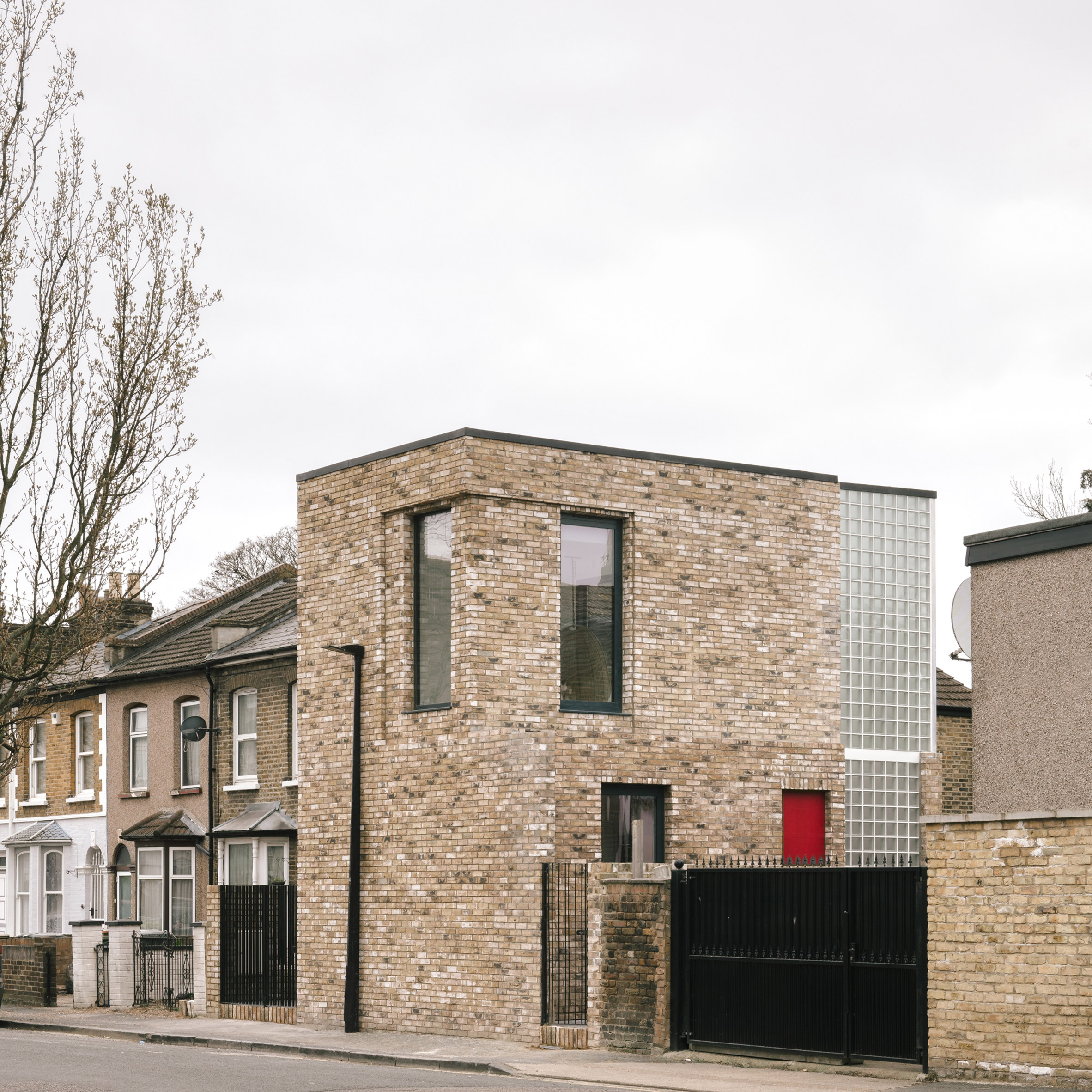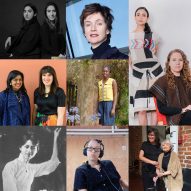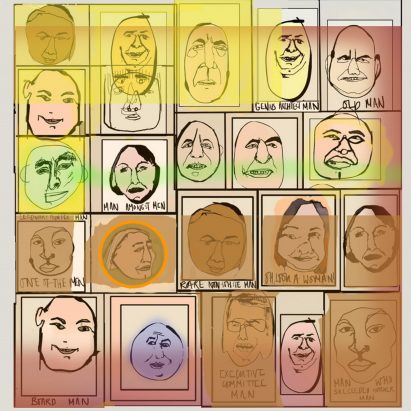
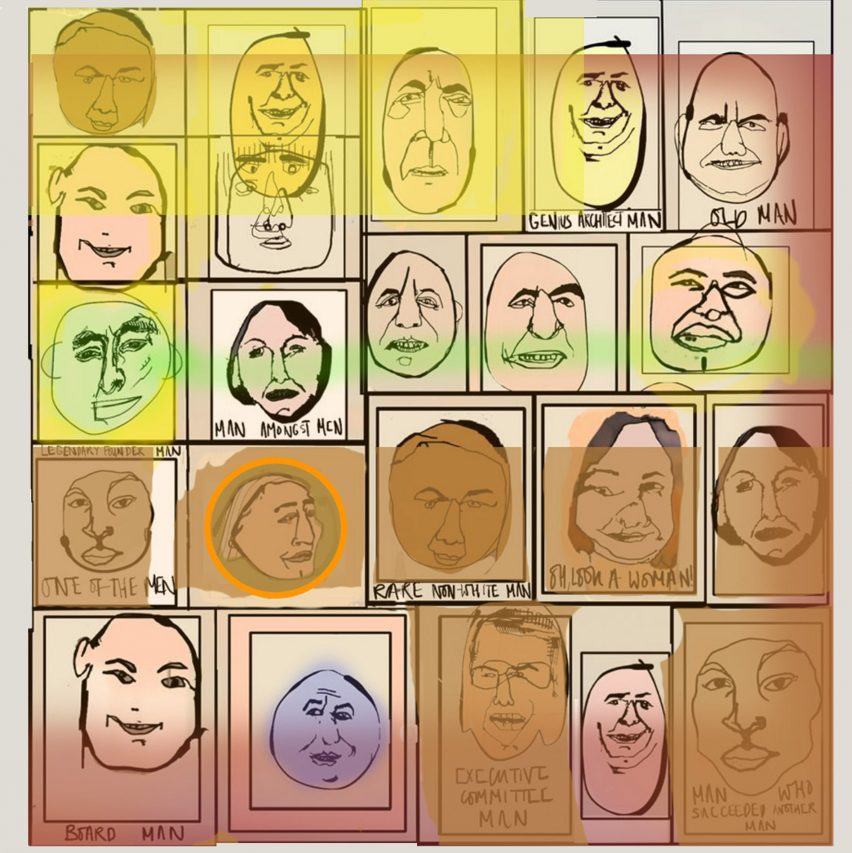
The percentage of women in top jobs at the biggest architecture firms has doubled over the past five years – but men still occupy four out of five key roles, according to research conducted by Dezeen to mark International Women's Day.
Women now make up 21 per cent of the highest-ranking jobs at the 100 largest architecture firms around the globe.
The figures was just 10 per cent in 2017, when Dezeen published a landmark survey of the gender balance at the world's 100 biggest practices, meaning the proportion has doubled.
Looking across all senior roles, women account for 29 per cent of staff, compared with 18 per cent five years ago. This represents a 60 per cent increase.
"A huge jump"
Former Royal Institute of British Architects president Angela Brady described the change as "a huge jump".
"An 11 percentage point rise in women in senior roles is a huge jump and very welcome," said Brady, who is director at London studio Brady Mallalieu Architects.
"With the increasing numbers of women graduating from universities, it is only a matter of time before we achieve further parity."
"It is good news that the total percentage of women in management positions is up," agreed Alexandra Hagen, chief executive of Sweden-based White Arkitekter, which was the only top-100 firm with more senior women than men in 2017.
However, gender parity remains a long way off in the architecture industry. Half of the 48 companies for which information was available had no women in their top management team. Twelve firms did not have any women at all among the senior staff listed on their websites. This figure is down from 16 in 2017.
"There is no excuse"
Sadie Morgan, co-founder of London studio dRMM, said progress was too slow and that "little seems to change".
"The data shows there is clearly much more as an industry we need to do, yet time goes by and little seems to change," she told Dezeen. "There is no excuse. Fifty-fifty should be a given. The industry needs to move on from the gender debate."
Only four of the firms surveyed employ as many or more women than men in senior positions. These are Gensler, GF & Partners, Sweco and White Arkitektur.
That compares with just two in 2017, one of which was White Arkitekter. The other company, Tengbom, has since dropped out of the world's top 100 largest studios and therefore was not surveyed this year.
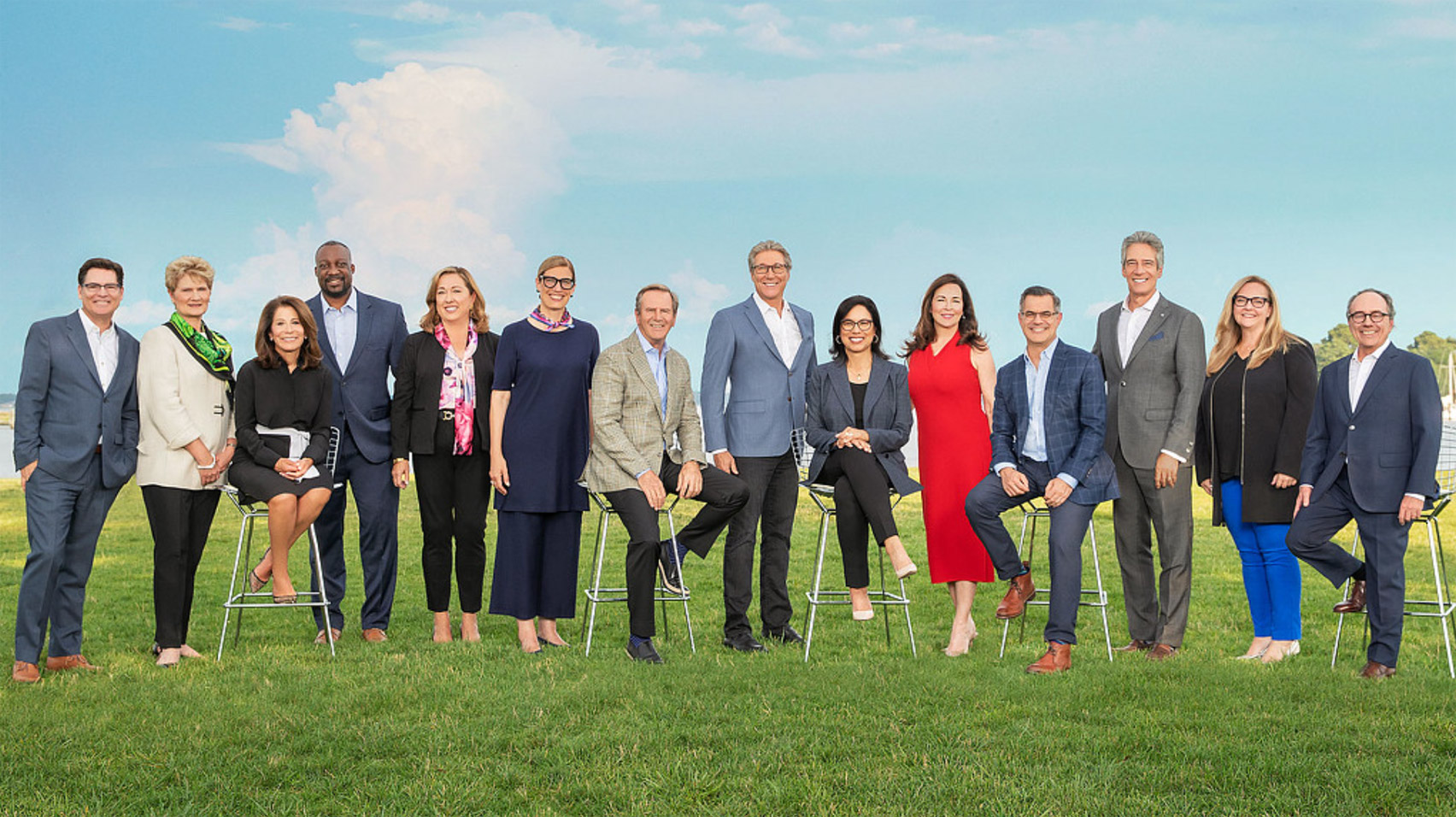 Above: Gensler, the world's largest architecture firm, is among a handful of the biggest studios with an even gender split on its top team. Top: illustration is by Leyla Reynolds
Above: Gensler, the world's largest architecture firm, is among a handful of the biggest studios with an even gender split on its top team. Top: illustration is by Leyla Reynolds
The new survey follows the format of the original survey from November 2017, when Dezeen published research on the number of women in top roles at 100 leading architecture firms.
It found that just three of the world's 100 biggest architecture firms were headed by women and only two had management teams that are more than 50 per cent female.
2017 survey revealed "shocking" lack of women in senior roles
Women occupied just 10 per cent of the highest-ranking jobs at the world's leading architecture firms, the survey revealed, while 16 firms had no women at all in senior positions.
The stark figures were met with horror from the industry and described as "quite shocking".
[ 
Read:
Part W creating map "to draw attention to built projects by women" in London
](https://www.dezeen.com/2022/03/08/part-w-womens-work-london-map/)
Five years on, to mark International Women's Day, we have updated the research to see how far the dial has moved.
To gather the data, we visited the website of each of the 100 biggest studios in the world as defined by the World Architecture 100 (WA100) list of international practices ranked by size, compiled annually by Building Design magazine.
There we counted up the number of senior men and women listed in the "People" sections, breaking them down into three tiers. Since structures vary widely between firms, categorising staff into these three tiers makes comparisons between companies easier. We used our own judgement based on names and photos to determine gender.
The top tier includes roles such as founders, presidents and C-suite executives. The second tier mainly consists of board members, principals or partners. The third tier is consists of associates, department leaders and other equivalent titles.
The research shows how things have changed at the 67 firms that appeared in both the 2017 and 2022 WA100 lists, where the relevant information was available.
Women in management positions increases from 18 to 28 per cent
Looking at all three management tiers together, there are 1,516 women out of a total of 5,319 people listed in senior positions on the websites of the 100 companies. This equates to 28 per cent, compared to 18 per cent in 2017.
As in our previous survey, the proportion of women is higher in the lower management tiers.
"The increased number of women in tier three suggests that more women are being trained for senior and executive management," said White Arkitekter's Hagen.
In the top tier, a total of 628 top-tier staff are listed. Of these, 132 are women, equating to 21 per cent. This compares to a figure of 10 per cent in 2017.
Out of the 1,528 second-tier staff listed, there are 388 women. This equates to 25 per cent. This compares to a figure of 18 per cent in 2017.
Out of the 3,045 third-tier staff listed, there are 950 women. This equates to 31 per cent. This compares to a figure of 21 per cent in 2017.
Number of senior women has decreased at 11 companies
At 16 of the firms surveyed, the proportion of women stayed the same or increased by less than one percentage point, while the proportion decreased at another 11 companies.
There are also examples of companies where the proportion of women in senior jobs appeared to have dramatically increased.
In many cases, this surge seemed to be related to a restructuring at the top of the company, often to a flatter management model with reduced emphasis on a very small number of people.
 In 2017 (left) Foster + Partners had only one woman among its senior staff. Its website today (right) shows multiple women among its senior partners, although there are still significantly more men
In 2017 (left) Foster + Partners had only one woman among its senior staff. Its website today (right) shows multiple women among its senior partners, although there are still significantly more men
However, at some firms, the increasing gender balance appeared at least partially the result of women being promoted to higher positions. For example, Foster + Partners had just one female senior partner in 2017, whereas now there are 13.
Anna Schabel, chair of Women in Architecture UK, argued that architecture firms should be as transparent as possible about the gender balance of their senior staff.
"We applaud the increase in top-level women and the increasing number of role-model movers and shakers at all levels," she said but suggested that some firms have simply changed the way their websites list senior staff in order to "gender-wash" their diversity figures.
"However, the carefully curated face of websites can obfuscate the issues and, dare we say it, gender-wash," she said. "We call on companies to provide more data on women's roles, particularly at the highest level."
[ 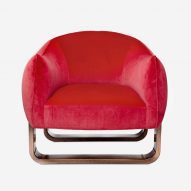
Read:
Ten lesser-known designs by women from the past century
](https://www.dezeen.com/2021/09/21/woman-made-book-jane-hall/)
"The practices that don't provide equal opportunities for women are limiting themselves," said Hagen. "They will eventually find they are not attractive employers to half of the talent available. This will be a disadvantage to their business."
Schabel issued a similar warning: "Unless we enable further change, we know that women will gravitate to the organisations that walk the talk – or out of our industry."
Below is the data for each of the 100 companies, in alphabetical order:
10 DESIGN
China
Top tier: one woman, two men
Second tier: three women, 19 men
Third tier: five women, two men
Overall there are nine women and 23 men in senior positions, meaning that 28 per cent are women. This is down from 31 per cent in 2017.
www.10design.co/profile/people
A26
France
Top tier: no women, one man
Second tier: two women, six men
Third tier: no women, two men
Overall there are two women and nine men in senior positions, meaning that 18 per cent are women. A26 was not in the 2017 survey.
www.a26.eu/agence
Aedas
China
Top tier: no women, one man
Second tier: one woman, 11 men
Third tier: 13 women, 48 men
Overall there are 14 women and 60 men in senior positions, meaning that 19 per cent are women. This is up from 11 per cent in 2017, driven by an increase in the number of women in the third tier.
www.aedas.com/en/about-us/our-people/global-board
AHR
UK
Top tier: no women, two men
Second tier: seven women, 23 men
Third tier: one woman, 11 men
Overall there are eight women and 35 men in senior positions, meaning that 19 per cent are women. This is up from 16 per cent in 2017.
www.ahr.co.uk/People
Aidea
Philippines
Top tier: no women, one man
Second tier: not listed
Third tier: not listed
The only member of staff mentioned on Aidea's website is now its CEO, who is a man. It did not respond to our request for further figures. In 2017, it listed three women and 12 men in senior positions, meaning that 20 per cent were women.
www.aidea.com.ph/about
Allford Hall Monaghan Morris
UK
Top tier: no women, five men
Second tier: five women, 10 men
Third tier: 16 women, 55 men
Overall there are 21 women and 70 men in senior positions, meaning that 23 per cent are women. This is marginally up from 22 per cent in 2017.
www.ahmm.co.uk/people/
Allies and Morrison
UK
Top tier: one woman, no men
Second tier: one woman, 16 men
Third tier: 20 women, 38 men
Overall there are 22 women and 54 men in senior positions, meaning that 29 per cent are women. This is up from 23 per cent in 2017.
A notable change at this firm is that it is now led by a female managing partner.
www.alliesandmorrison.com/people
Archetype Group
Vietnam
Top tier: no women, two men
Second tier: one woman, 13 men
Third tier: not listed
Overall there is one woman and 15 men in senior positions, meaning that six per cent are women. This is down from eight per cent in 2017, when there were three fewer men at the second tier.
www.archetype-group.com/about-us/people
Arcplus Group
China
The information for this firm was not available online and it did not respond to our request for the figures. Arcplus Group was not in the 2017 survey.
ASYA
Philippines
Top tier: no women, one man
Second tier: not listed
Third tier: not listed
The only member of staff mentioned on ASYA's website is its founder and leader, who is a man. It did not respond to our request for further figures. ASYA was not in the 2017 survey.
<https://asyadesign.com.ph/about-asya>
ATP Architects Engineers
Austria
Top tier: one woman, seven men
Second tier: not listed
Third tier: not listed
Overall there is one woman and eight men in senior positions listed, meaning that 13 per cent are women. There were no women listed in 2017.
www.atp.ag/integrated-design/about-atp/partners/
Aukett Swanke
UK
Top tier: one woman, three men
Second tier: three women, 14 men
Third tier: two women, 8 men
Overall there are six women and 25 men in senior positions, meaning that 19 per cent are women. This is down from 24 per cent in 2017. It had not responded to our request for comment at the time of publication.
www.aukettswanke.com/studio/people
AXS Satow
Japan
Top tier: no women, one man
Second tier: not listed
Third tier: not listed
The only member of staff mentioned on AXS Satow's website is its president and chair, who is a man. It did not respond to our request for further figures.
In the 2017 survey, it listed eight other senior staff, all of whom were men.
www.axscom.co.jp/en/company/
Azusa Sekkei
Japan
Top tier: no women, one man
Second tier: not available
Third tier: not available
Azusa Sekkei's website lists only the names of its senior staff, without pictures. Dezeen was only able to verify the gender of its president and CEO, who is a man.
It did not respond to a request to confirm the figures. Asuza Sekkei was not in the 2017 survey.
www.azusasekkei.co.jp/en/company/management/
B+H Architects
Canada
Top tier: 14 women, 30 men
Second tier: 15 women, 27 men
Third tier: 27 women, 27 men
Overall there are 56 women and 84 men in senior positions, meaning that 40 per cent are women. This is up from 18 per cent in 2017, driven by an increase in the number of women at all tiers.
<https://bharchitects.com/en/people/>
BDP
UK
Top tier: four women, 26 men
Second tier: two women, six men
Third tier: 25 women, 79 men
Overall there are 31 women and 111 men in senior positions, meaning that 22 per cent are women. This is up from 5 per cent in 2017, mostly driven by the number of women at the third tier, which was not counted in the previous survey.
www.bdp.com/en/about/people
Boogertman + Partners
South Africa
Top tier: two women, 11 men
Second tier: one woman, three men
Third tier: not listed
Overall there are three women and 14 men in senior positions, meaning that 18 per cent are women. Boogertman + Partners was not in the 2017 survey.
<https://boogertmanandpartners.com/team>
Broadway Malyan
UK
Top tier: no women, two men
Second tier: eight women, 19 men
Third tier: not listed
Overall there are eight women and 21 men in senior positions, meaning that 28 per cent are women. This is up from 11 per cent in 2017, driven by an increase in the number of women at the second tier.
www.broadwaymalyan.com/people/our-people/
CF Møller
Denmark
Top tier: two women, two men
Second tier: one woman, four men
Third tier: one woman, six men
Overall there are four women and 12 men in senior positions, meaning that 25 per cent are women. This is the same as in 2017.
www.cfmoller.com/f/About
CannonDesign
US
Top tier: six women, 10 men
Second tier: five women, four men
Third tier: not listed
Overall there are 11 women and 14 men in senior positions, meaning that 44 per cent are women. This is up from 18 per cent in 2017.
CannonDesign said the increase in the proportion of women was related to its Diversity, Equity and Inclusion framework which see it invest in initiatives aimed at fostering equality. It also told Dezeen that at its third tier of management 33 per cent of staff are women.
www.cannondesign.com/leadership/#management
Capol
China
Top tier: one woman, one man
Second tier: no women, eight men
Third tier: not listed
Overall there is one woman and nine men in senior positions, meaning that 10 per cent are women. Capol was not in the 2017 survey.
en.capol.cn:9000/about.aspx
Chapman Taylor
UK
Top tier: no women, seven men
Second tier: five women, 24 men
Third tier: 10 women, 27 men
Overall there are 15 women and 58 men in senior positions, meaning that 21 per cent are women. This is up from 15 per cent in 2017.
www.chapmantaylor.com/people
Corgan
US
Top tier: one woman, two men
Second tier: three women, four men
Third tier: three women, 21 men
Overall there are seven women and 27 men in senior positions, meaning that 21 per cent are women. This is up from 20 per cent in 2017.
www.corgan.com/about-corgan/leadership
CP Kukreja Architects
India
Top tier: no women, two men
Second tier: not listed
Third tier: not listed
CP Kukreja Architects' website only lists its founder and its managing principal, both of whom are men. This means that there are zero women in senior positions, which is the same as in 2017.
www.cpkukreja.com/about-us.html
Dewan Architects + Engineers
UAE
Top tier: no women, four men
Second tier: one woman, 10 men
Third tier: five women, 23 men
Overall there are six women and 37 men in senior positions, meaning that 14 per cent are women. This is down from 20 per cent in 2017.
www.dewan-architects.com/people/
Diamond Schmitt
Canada
Top tier: five women, 16 men
Second tier: 14 women, 30 men
Third tier: seven women, two men
Overall there are 26 women and 48 men in senior positions, meaning that 35 per cent are women. Diamond Schmitt was not in the 2017 survey.
dsai.ca/people/#categories=directors
DLN Architects
China
Top tier: no women, one man
Second tier: three women, 11 men
Third tier: four women, four men
Overall there are seven women and 16 men in senior positions, meaning that 30 per cent are women. This is up from 18 per cent in 2017, driven by a balancing of the proportion of women in the third tier.
www.dln.com.hk/html5/?section=firm&lang=en
DLR Group
US
Top tier: four women, five men
Second tier: four women, 15 men
Third tier: two women, 19 men
Overall there are 10 women and 39 men in senior positions, meaning that 20 per cent are women. This is up from 12 per cent in 2017, driven increase in the number of women in top tier roles.
DLR Group told Dezeen that its website is designed to demonstrate the full range of services it provides in order to attract talent, and said that its true senior team is 36 per cent women.
www.dlrgroup.com/firm-2/leadership/?ref=menulist
DSP Design Associates
India
Top tier: no women, three men
Second tier: one woman, seven men
Third tier: three women, six men
Overall there are four women and 16 men in senior positions, meaning that 20 per cent are women. This is up from 15 per cent in 2017 when figures for the third tier were not recorded.
dspdesign.co/about-us.php
DWP
Australia
Top tier: no women, three men
Second tier: one woman, three men
Third tier: 19 women, 19 men
Overall there are 20 women and 25 men in senior positions, meaning that 44 per cent are women. DWP was not in the 2017 survey.
dwp.com/profile/our-people-design-leaders
EHAF Consulting Engineers
UAE
No information about EHAF Consulting Engineers' senior staff was available online and it did not respond to our request for the information. This was also the case in 2017.
www.ehaf.com/
EPR Architects
UK
Top tier: no women, five men
Second tier: one woman, 11 men
Third tier: 19 women, 32 men
Overall there are 20 women and 48 men in senior positions, meaning that 29 per cent are women. This is up from 24 per cent in 2017.
www.epr.co.uk/people/
Feilden Clegg Bradley Studios
UK
Top tier: seven women, 19 men
Second tier: 11 women, 30 men
Third tier: not listed
Overall there are 18 women and 49 men in senior positions, meaning that 27 per cent are women. This is up from 21 per cent in 2017.
fcbstudios.com/about/people
Fentress Architects
US
Top tier: one woman, three men
Second tier: five women, eight men
Third tier: no women, one man
Overall there are six women and 12 men in senior positions, meaning that 33 per cent are women. Fentress Architects was not in the 2017 survey.
fentressarchitects.com/people
Foster + Partners
UK
Top tier: 13 women, 48 men
Second tier: 25 women, 90 men
Third tier: 176 women, 309 men
Overall there are 214 women and 447 men in senior positions, meaning that 32 per cent are women. This is up from just three per cent in 2017 when the survey captured 29 people, among whom there was only one woman.
Foster + Partners' website only lists the names of people in the third tier and not pictures, but it confirmed the gender breakdown to Dezeen.
www.fosterandpartners.com/studio/people/senior-partners/
Gensler
US
Top tier: one woman, one man
Second tier: six women, six men
Third tier: not listed
Overall there are seven women and seven men in senior positions, meaning that 50 per cent are women. This is up from 43 per cent in 2017 and makes Gensler one of only five companies in the top 100 where at least half the management staff listed on its website are women.
It is also the world's largest architecture firm according to the WA100 list.
www.gensler.com/people
GF & Partners
Philippines
Top tier: one woman, no men
Second tier: three women, three men
Third tier: no women, one man
Overall there are four women and four men in senior positions, meaning that 50 per cent are women and making GF & Partners one of only five companies in the top 100 where at least half the management staff listed on its website are women. Notably, its managing partner is a woman.
GF & Partners was not in the 2017 survey.
gfparchitects.com/gf/about/
GHDWoodhead
Australia
Top tier: one woman, no men
Second tier: no women, five men
Third tier: three women, seven men
Overall there are four women and 12 men in senior positions, meaning that 25 per cent are women. This is up from 13 per cent in 2017. Notably, GHDWoodhead's national practice leader is a woman.
www.ghdwoodhead.com/who-we-are.html
GMP Architekten
Germany
Top tier: no women, six men
Second tier: one woman, 15 men
Third tier: 14 women, 29 men
Overall there are 15 women and 50 men in senior positions, meaning that 23 per cent are women. This is up from six per cent in 2017, driven by information on a wider pool of staff becoming available.
www.gmp.de/en/office/35/management
Gulf Consult
Kuwait
Top tier: no women, one man
Second tier: no women, two men
Third tier: two women, one man
Overall there are two women and four men in senior positions, meaning that 33 per cent are women. Gulf Consult was not in the 2017 survey.
www.gckuwait.com/leadership/
Haeahn Architecture
South Korea
Top tier: no women, six men
Second tier: no women, one man
Third tier: no women, two men
Overall there are no women and nine men in senior positions, meaning that zero per cent are women. This was also the case in 2017.
www.haeahn.com/en/about/member.do
Hames Sharley
Australia
Top tier: no women, two men
Second tier: two women, 11 men
Third tier: 11 women, 63 men
Overall there are 13 women and 76 men in senior positions, meaning that 15 per cent are women. This is up from five per cent in 2017 when figures for the third tier were not available.
www.hamessharley.com.au/people
HDR
US
Top tier: two women, six men
Second tier: not listed
Third tier: not listed
Overall there are two women and 76 men in senior positions listed, meaning that 25 per cent are women. This is up from 13 per cent in 2017 when there was one less woman.
These figures only cover HDR's board of directors, who are the only staff listed on its website. The firm told Dezeen that across all 579 staff in its top three management tiers, 27 per cent are women.
<https://www.hdrinc.com/about-us/board-directors>
Heerim Architects & Planners
South Korea
Top tier: no women, three men
Second tier: no women, 10 men
Third tier: three women, 35 men
Overall there are three women and 48 men in senior positions, meaning that six per cent are women. This is unchanged from 2017.
www.heerim.com/en/about/leadership.php
Heinle, Wischer und Partner
Germany
Top tier: no women, one man
Second tier: one woman, 10 men
Third tier: not listed
Overall there is one woman and 11 men in senior positions, meaning that eight per cent are women. Heinle, Wischer und Partner was not in the 2017 survey.
www.heinlewischer.de/buero/
HKS
US
Top tier: two women, five men
Second tier: seven women, five men
Third tier: five women, 17 men
Overall there are 14 women and 27 men in senior positions, meaning that 34 per cent are women. This is up from zero per cent in the 2017 survey when there were no women listed.
www.hksinc.com/people-directory/
HOK
US
Top tier: one woman, six men
Second tier: 13 women, 44 men
Third tier: 46 women, 78 men
Overall there are 60 women and 128 men in senior positions, meaning that 32 per cent are women. This is up from 25 per cent in 2017 when a much smaller pool of staff was listed.
www.hok.com/people/
HPP Architekten
Germany
Top tier: one woman, five men
Second tier: one woman, nine men
Third tier: four women, 12 men
Overall there are six women and 26 men in senior positions, meaning that 19 per cent are women. This is up from 12 per cent in 2017.
www.hpp.com/en/who-we-are/team/
Hyphen
UK
Top tier: one woman, two men
Second tier: two women, eight men
Third tier: nine women, eight men
Overall there are 12 women and 18 men in senior positions, meaning that 40 per cent are women. Hyphen was not in the 2017 survey.
<https://hyphen.archi/our-people/>
IBI Group
Canada
Top tier: no women, two men
Second tier: no women, one man
Third tier: five women, 20 men
Overall there are five women and 23 men in senior positions, meaning that 18 per cent are women. This is up from 14 per cent in 2017.
www.ibigroup.com/our-people/
Idom
Spain
Top tier: no women, two men
Second tier: no women, two men
Third tier: one woman, 13 men
Overall there is one woman and 17 men in senior positions, meaning that six per cent are women. This is up from zero per cent in the 2017 survey when there were no women listed.
www.idom.com/en/about/
IttenBrechbühl
Switzerland
Top tier: no women, one man
Second tier: one woman, two men
Third tier: 24 women, 39 men
Overall there are 25 women and 42 men in senior positions, meaning that 37 per cent are women. This is up from nine per cent in the 2017 survey when third-tier figures were not recorded.
www.ittenbrechbuehl.ch/en/company/team/
Jaspers-Eyers Architects
Belgium
Top tier: two women, six men
Second tier: six women, five men
Third tier: eight women, 23 men
Overall there are 16 women and 34 men in senior positions, meaning that 32 per cent are women. These figures are not available on the Jaspers-Eyers Architects website but were provided directly to Dezeen.
In the 2017 survey only the two founders, both men, were counted.
www.jaspers-eyers.be/
KEO International Consultants
Kuwait
Top tier: one woman, one man
Second tier: two women, 11 men
Third tier: three women, 16 men
Overall there are six women and 28 men in senior positions, meaning that 18 per cent are women. This is down from 20 per cent in 2017.
www.keoic.com/people
Kume Sekkei
Japan
Top tier: no women, one man
Second tier: no women, six men
Third tier: no women, 13 men
Overall there are no women and 20 men in senior positions, meaning that zero per cent are women. In the 2017 survey, only the CEO, who is a man, was counted.
www.kumesekkei.co.jp/en/company/officer.html
Kunwon
South Korea
Top tier: no women, three men
Second tier: one woman, nine men
Third tier: not listed
Overall there is one woman and 12 men in senior positions, meaning that eight per cent are women. This is down slightly from nine per cent in 2017.
www.kunwon.com/en/abou/abou3.php
Lead8
China
Top tier: one woman, four men
Second tier: not listed
Third tier: not listed
Overall there is one woman and four men in senior positions, meaning that 20 per cent are women. Lead8 was not in the 2017 survey.
www.lead8.com/people
Leigh & Orange
China
Top tier: three women, three men
Second tier: one woman, nine men
Third tier: not listed
Overall there are four women and 12 men in senior positions, meaning that 25 per cent are women. Leigh & Orange was not in the 2017 survey.
<https://www.leighorange.com/about/our-people/>
Lemay
Canada
Top tier: two women, 11 men
Second tier: 23 women, 37 men
Third tier: 14 women, 11 men
Overall there are 39 women and 59 men in senior positions, meaning that 40 per cent are women. Lemay was not in the 2017 survey.
lemay.com/who-we-are/
Leo A Daly
US
Top tier: no women, two men
Second tier: eight women, 21 men
Third tier: 12 women, 25 men
Overall there are 20 women and 48 men in senior positions, meaning that 29 per cent are women. This is up from zero per cent in 2017, when no women were counted among 18 senior staff.
leoadaly.com/about-us/people/
Link Arkitektur
Norway
Top tier: four women, two men
Second tier: eight women, six men
Third tier: seven women, 18 men
Overall there are 19 women and 26 men in senior positions, meaning that 42 per cent are women. This is up slightly from 40 per cent in 2017.
linkarkitektur.com/en/key-people
LWK + Partners
China
Top tier: zero women, 12 men
Second tier: two women, 25 men
Third tier: nine women, 12 men
Overall there are 11 women and 49 men in senior positions, meaning that 18 per cent are women. LWK + Partners was not in the 2017 survey.
www.lwkp.com/people/
Mitsubishi Jisho Sekkei
Japan
Top tier: zero women, one man
Second tier: zero women, 10 men
Third tier: zero women, eight men
Overall there are zero women and 19 men in senior positions, meaning that zero per cent are women. This was also the case in 2017 when six senior staff were counted.
www.mj-sekkei.com/en/about/officer.html
Morph
Spain
The information for this firm was not available on its website and it did not respond to our request for the figures. Morph was not in the 2017 survey.
morphestudio.es
Morphogenesis
India
Top tier: one woman, one man
Second tier: not listed
Third tier: not listed
Morphogenesis' website does not list the roles of staff on its "People" page, so we have only included information about its two founders, one of whom is a woman and one of whom is a man. This was also the case in 2017.
However, of the 89 staff shown on the website, 37 are women, or 42 per cent.
www.morphogenesis.org/about-us/our-people/
National Engineering Bureau
UAE
Top tier: no women, one man
Second tier: no women, three men
Third tier: one woman, seven men
Overall there is one woman and 11 men in senior positions, meaning that eight per cent are women. This is up from zero per cent in 2017 when no women were counted among three top staff.
www.neb.ae/people/
NBBJ
US
Top tier: five women, 14 men
Second tier: 31 women, 57 men
Third tier: 90 women, 134 men
Overall there are 126 women and 205 men in senior positions, meaning that 38 per cent are women. This is up from 18 per cent in 2017 when a significantly smaller number of people were counted.
The 2022 figures were provided directly by NBBJ, which said its website is not up to date.
<http://www.nbbj.com/people/>
Nihon Sekkei
Japan
Top tier: no women, two men
Second tier: no women, eight men
Third tier: no women, 16 men
Overall there are no women and 26 men in senior positions, meaning that zero per cent are women. This is unchanged from 2017 when 32 senior staff were counted.
nihonsekkei.co.jp/corporate/officer/?lang=en
Nikken Sekkei
Japan
Top tier: no women, nine men
Second tier: two women, 47 men
Third tier: 17 women, 238 men
Overall there are 19 women and 313 men in senior positions, meaning that six per cent are women. This is up from zero per cent in 2017 when no women were counted among 29 senior staff.
The figures for the third tier were provided directly by Nikken Sekkei. Without taking these into account, the proportion of women listed would be three per cent.
www.nikken.co.jp/en/about/people/index.html
P &T Group
China
Top tier: eight women, 33 men
Second tier: not listed
Third tier: not listed
Overall there are eight women and 33 men in senior positions, meaning that 20 per cent are women. This is up slightly from 18 per cent in 2017.
web.p-t-group.com/en/about/people.php
Page
US
Top tier: one woman, 11 men
Second tier: 23 women, 50 men
Third tier: 28 women, 58 men
Overall there are 52 women and 119 men in senior positions, meaning that 30 per cent are women. This is up from 24 per cent in 2017.
www.pagethink.com/culture/
PBK
US
Top tier: no women, seven men
Second tier: two women, 18 men
Third tier: not listed
Overall there are two women and 25 men in senior positions, meaning that seven per cent are women. This is down from 14 per cent in 2017.
The "Corporate Leadership" section of PBK's website includes a PR officer, who is a woman, among seven men who all appear to have much more senior roles, such as president and co-CEO. We chose not to include the PR officer. PBK did not respond to our request for comment about this.
pbk.com/pbk-people/
Perkins Eastman
US
Top tier: one woman, eight men
Second tier: 31 women, 87 men
Third tier: 38 women, 35 men
Overall there are 70 women and 130 men in senior positions, meaning that 35 per cent are women. This is up from 27 per cent in 2017.
www.perkinseastman.com/leadership
PM Group
Ireland
Top tier: one woman, two men
Second tier: three women, seven men
Third tier: two women, 12 men
Overall there are six women and 21 men in senior positions, meaning that 22 per cent are women. PM Group was not in the 2017 survey.
www.pmgroup-global.com/about-us/leadership/
Progetto CMR
Italy
Top tier: no women, two men
Second tier: one woman, no men
Third tier: not listed
Overall there is one woman and two men in senior positions, meaning that 33 per cent are women. This is unchanged from 2017.
www.progettocmr.com/en/about
PRP
UK
Top tier: two women, eight men
Second tier: five women, 27 men
Third tier: 14 women, 12 men
Overall there are 21 women and 47 men in senior positions, meaning that 31 per cent are women. PRP was not in the 2017 survey.
www.prp-co.uk/about/people/
Purcell
UK
Top tier: one woman, one man
Second tier: seven women, 11 men
Third tier: 10 women, 18 men
Overall there are 18 women and 30 men in senior positions, meaning that 38 per cent are women. This is up from 32 per cent in 2017.
www.purcelluk.com/people
Richez Associés
France
Top tier: no women, two men
Second tier: nine women, seven men
Third tier: 34 women, 46 men
Overall there are 43 women and 55 men in senior positions, meaning that 44 per cent are women. Richez Associés was not in the 2017 survey.
www.richezassocies.com/fr/equipe
Ronald Lu & Partners
China
Top tier: no women, one man
Second tier: no women, two men
Third tier: no women, 10 men
Overall there are no women and 13 men among the senior staff listed on the Ronald Lu & Partners website, meaning that zero per cent are women. This is down from six per cent in 2017 when there was one woman and 16 men.
Ronald Lu & Partners told Dezeen it does have two women at director level and six women at associate director level across its staff of 600 people, with more women in senior associate and associate roles.
www.rlphk.com/eng/about-us/people/4/
RSP
Singapore
Top tier: two women, six men
Second tier: one woman, five men
Third tier: nine women, 13 men
Overall there are 12 women and 24 men in senior positions, meaning that 33 per cent are women. RSP was not in the 2017 survey.
rsp.sg/leaders/
Saota
South Africa
Top tier: no women, one man
Second tier: two women, four men
Third tier: six women, 15 men
Overall there are eight women and 20 men in senior positions, meaning that 29 per cent are women. Saota was not in the 2017 survey.
www.saota.com/about/people/
Scott Brownrigg
UK
Top tier: one woman, four men
Second tier: six women, 16 men
Third tier: 24 women, 34 men
Overall there are 31 women and 54 men in senior positions, meaning that 36 per cent are women. This is up from 25 per cent in 2017 with an increase in the number of women at all tiers.
www.scottbrownrigg.com/company/people/
Sheppard Robson
UK
Top tier: five women, 19 men
Second tier: 10 women, 12 men
Third tier: 16 women, 23 men
Overall there are 31 women and 54 men in senior positions, meaning that 36 per cent are women. This is up from 12 per cent in 2017 when only information for the top tier was available.
www.sheppardrobson.com/practice/people
Showa Sekkei
Japan
Top tier: no women, two men
Second tier: no women, one man
Third tier: not listed
Overall there are no women and three men in senior positions, meaning that zero per cent are women. This was also the case in 2017 when four men and no women were counted.
www.showa-sekkei.co.jp/en/about/profile.html
Sikka Associates
India
Information about senior staff at Sikka Associates was not available on its website in either 2017 or 2022. The only method of contacting the company displayed on its website was an online form, which did not work after multiple tries.
<http://saaindia.net/>
SmithGroup
US
Top tier: no women, three men
Second tier: three women, three men
Third tier: 28 women, 43 men
Overall there are 31 women and 49 men in senior positions, meaning that 39 per cent are women. This is up from 25 per cent in 2017 when information on the third tier was not available.
In 2017, SmithGroup told Dezeen it had developed a six-point plan to increase the proportion of women in its leadership positions. Asked if it felt that this plan has been successful, a spokesperson for the firm said: "We definitely feel like this has been a success, but it’s also the kind of work that is never truly done – it’s all about evolving culture. Over the past two years, we have focused on racial equity as much as gender equity, so this continues to be a priority topic for the firm."
www.smithgroup.com/our-firm/people
SSH
Bahrain
Top tier: no women, four men
Second tier: two women, 15 men
Third tier: not listed
Overall there are two women and 19 men in senior positions, meaning that 10 per cent are women. SSH was not in the 2017 survey.
www.sshic.com/people/
Stantec
Canada
Top tier: three women, five men
Second tier: not listed
Third tier: not listed
Overall there are three women and 5 men in senior positions, meaning that 38 per cent are women. This is up from zero per cent in 2017 when there were no women counted among 15 senior staff. Figures for 2022 only show the firm's corporate leadership team.
www.stantec.com/en/about/corporate-leadership
Stride Treglown
UK
Top tier: no women, two men
Second tier: three women, 10 men
Third tier: 34 women, 97 men
Overall there are 37 women and 109 men in senior positions, meaning that 25 per cent are women. Stride Treglown was not in the 2017 survey.
stridetreglown.com/people/
Surbana Jurong
Singapore
Top tier: no women, four men
Second tier: three women, five men
Third tier: one woman, 13 men
Overall there are four women and 22 men in senior positions, meaning that 15 per cent are women. Surbana Jurong was not in the 2017 survey.
surbanajurong.com/our-management-team
Sweco
Sweden
Top tier: four women, one man
Second tier: seven women, eight men
Third tier: not listed
Overall there are 11 women and nine men in senior positions, meaning that 55 per cent are women. This information was provided directly to Dezeen and is not shown on the company's website. Figures for Sweco were not available in 2017.
www.sweco.co.uk
Tianhua
China
Top tier: no women, two men
Second tier: two women, 11 men
Third tier: three women, 18 men
Overall there are five women and 31 men in senior positions, meaning that 14 per cent are women. Tianhua was not in the 2017 survey.
www.thape.com/leadership
Valode & Pistre
France
Top tier: no women, two men
Second tier: two women, two men
Third tier: not listed
Overall there are two women and four men in senior positions, meaning that 33 per cent are women. This is unchanged from 2017.
www.v-p.com/en/dvalode-and-jpistre
Visionarch
Philippines
Information about senior staff at this company was not available on its website and it did not respond to a request for the figures. Visionarch was not in the 2017 survey.
www.visionarch-architects.com/
White Arkitekter
Sweden
Top tier: nine women, 10 men
Second tier: 11 women, 10 men
Third tier: 33 women, 16 men
Overall there are 53 women and 36 men in senior positions, meaning that 60 per cent are women. This is up from 58 per cent in 2017.
White Arkitektur has the highest proportion of women in its senior staff of all the companies in this list. It was also the only firm with more women than men in 2017.
whitearkitekter.com/contact-us/
Wilmotte & Associés
France
Top tier: one woman, one man
Second tier: no women, three men
Third tier: not listed
Overall there is one woman and four men in senior positions, meaning that 20 per cent are women. This is unchanged from 2017.
www.wilmotte.com/en/agency/teams
Wong Tung & Partners
China
Top tier: no women, one man
Second tier: no women, one man
Third tier: three women, six men
Overall there are three women and eight men in senior positions, meaning that 27 per cent are women. This is up from 14 per cent in 2017 driven by an increase in the number of women at the third tier.
www.wongtung.com/en/our-people/
Zaha Hadid Architects
UK
Top tier: no women, five men
Second tier: five women, 11 men
Third tier: 21 women, 42 men
Overall there are 26 women and 58 men in senior positions, meaning that 31 per cent are women. Zaha Hadid Architects was not in the 2017 survey.
www.zaha-hadid.com/people/
ZGF Architects
US
The layout of ZGF Architects' website makes it difficult to work out the hierarchy of senior staff listed and it did not respond to a request for a breakdown.
Overall, there are 46 women and 72 men in senior positions, meaning that 39 per cent are women. This is up from 33 per cent in 2017.
www.zgf.com/leadership/
Zhubo Design
China
Information about senior staff at this company was not available on its website and it did not respond to a request for the figures. Zhubo Design was not in the 2017 survey.
www.zhubo.com/
The post Women make up just one in five top positions at biggest architecture firms despite "huge jump" appeared first on Dezeen.
#all #architecture #news #womeninarchitectureanddesign #diversity #internationalwomensday
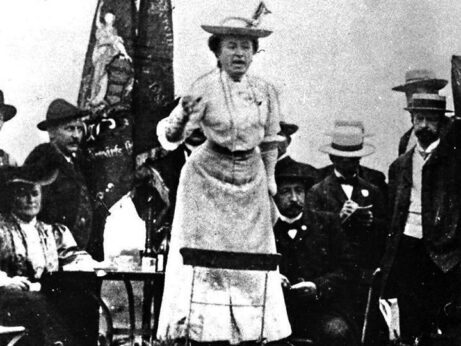
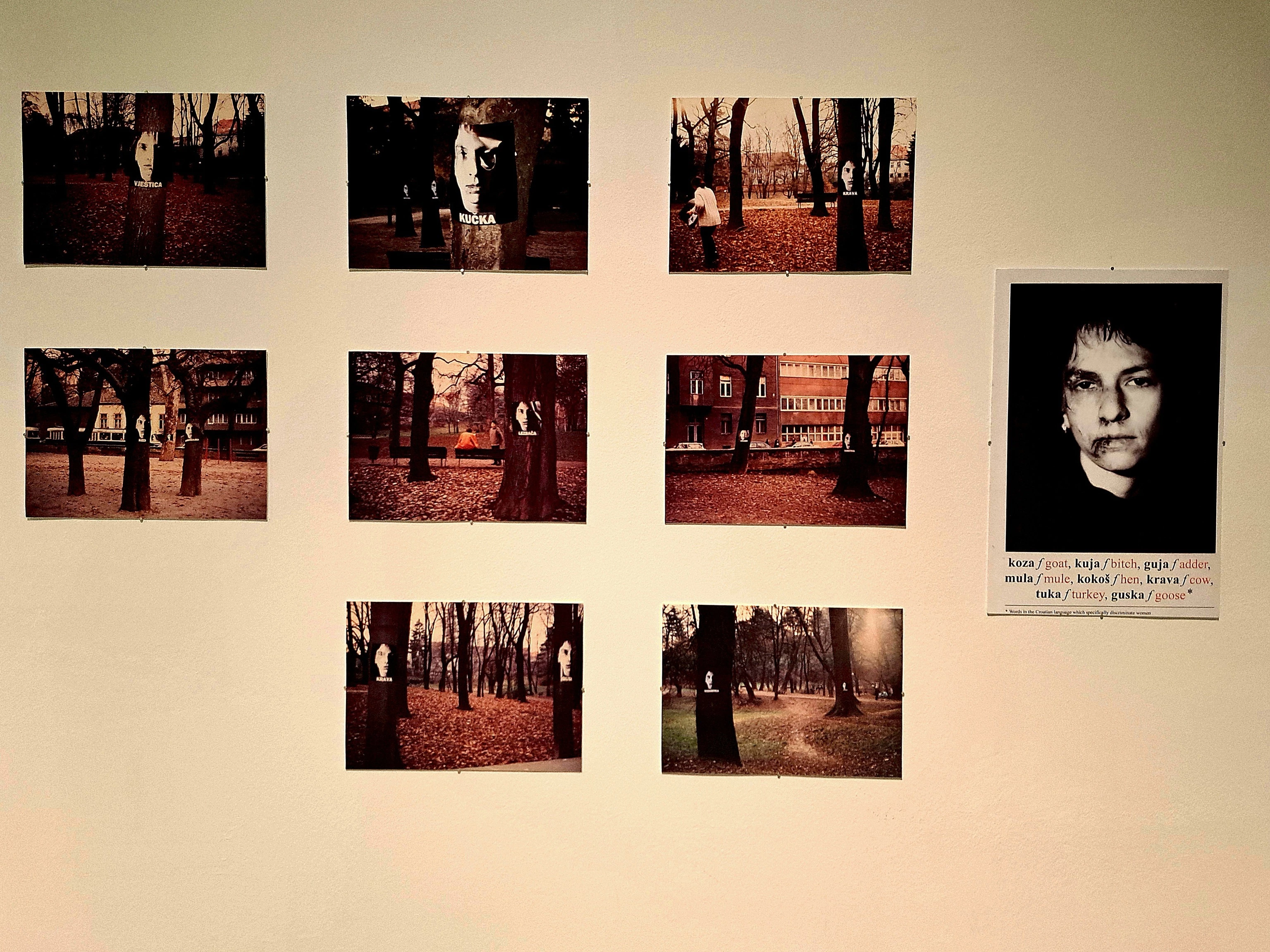




 Above: Gensler, the world's largest architecture firm, is among a handful of the biggest studios with an even gender split on its top team. Top: illustration is by
Above: Gensler, the world's largest architecture firm, is among a handful of the biggest studios with an even gender split on its top team. Top: illustration is by 
 In 2017 (left) Foster + Partners had only one woman among its senior staff. Its website today (right) shows multiple women among its senior partners, although there are still significantly more men
In 2017 (left) Foster + Partners had only one woman among its senior staff. Its website today (right) shows multiple women among its senior partners, although there are still significantly more men
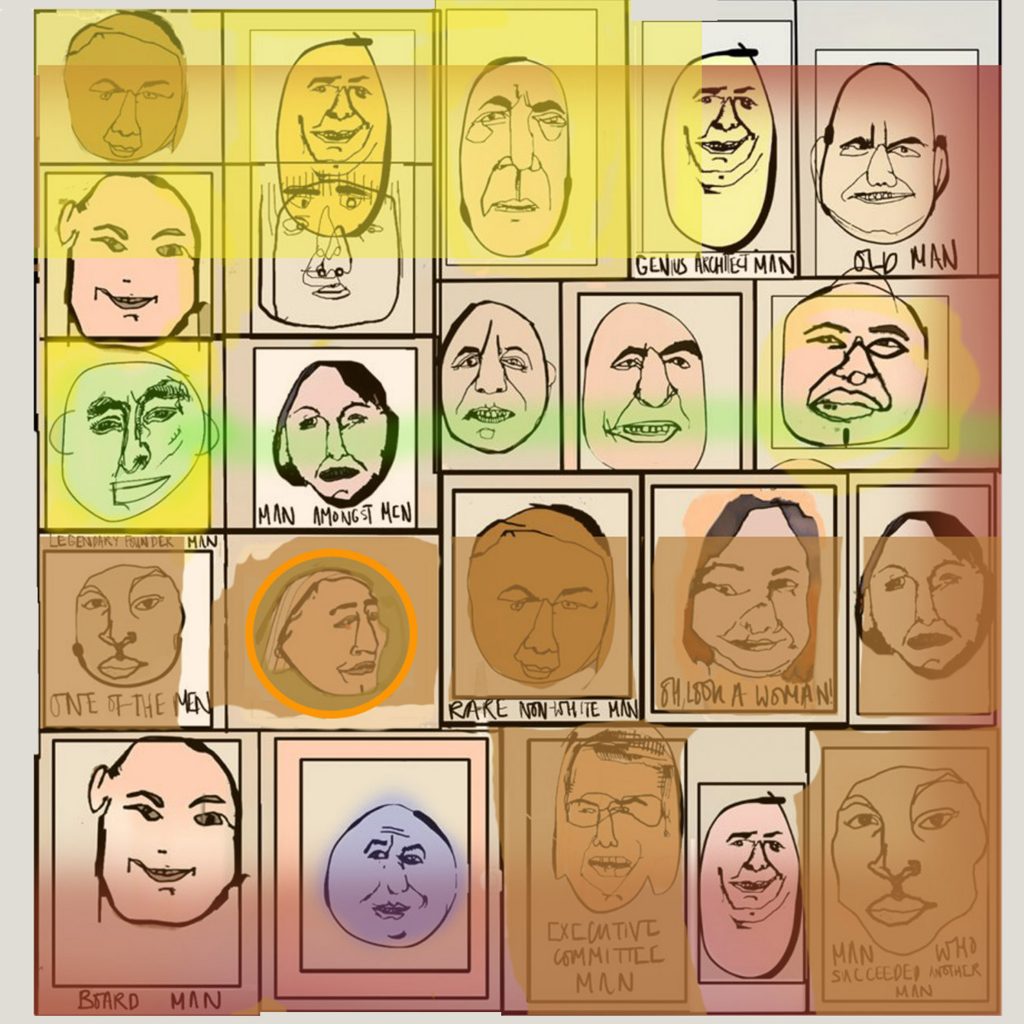
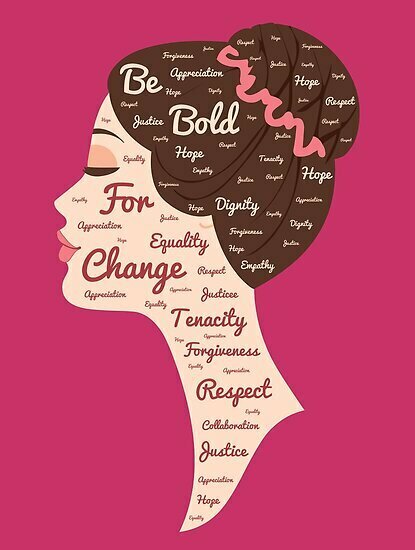


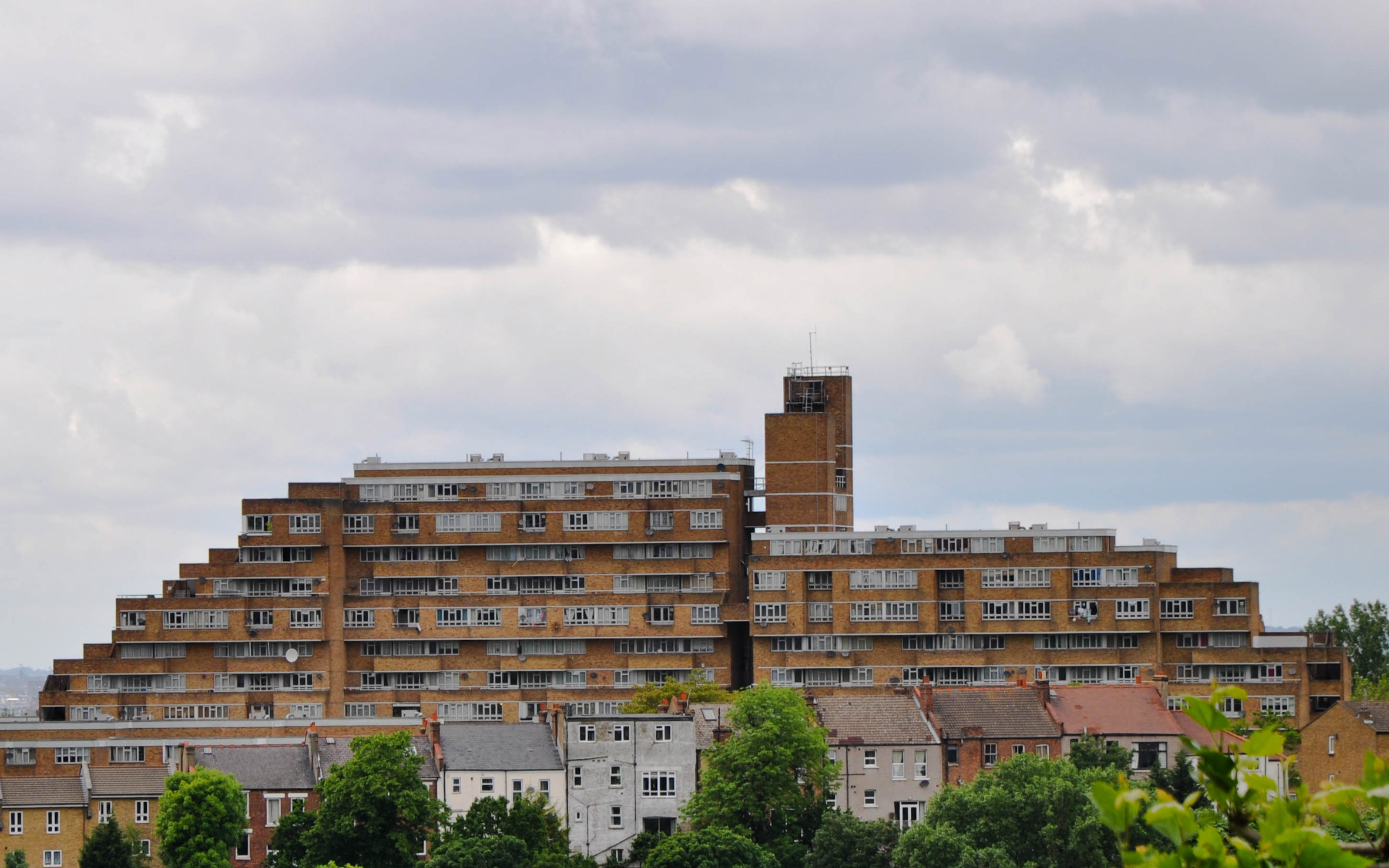 Top: Part W is mapping projects in London created by women. Above: Dawson's Heights, designed by Kate Macintosh, will be included
Top: Part W is mapping projects in London created by women. Above: Dawson's Heights, designed by Kate Macintosh, will be included